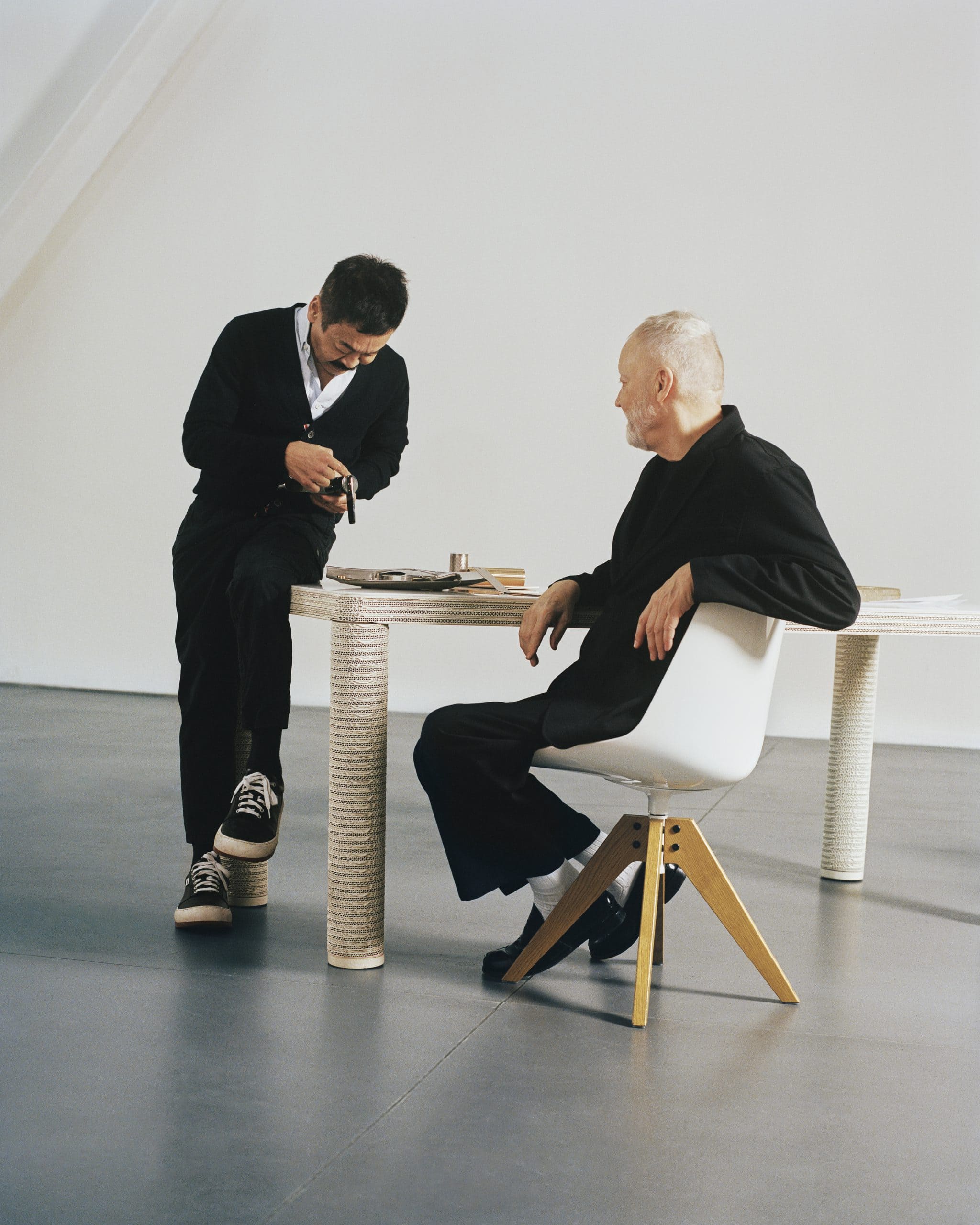With Veloce, their latest collection for Italian tapware brand Zucchetti, George Yabu and Glenn Pushelberg turn an everyday object into an intimate encounter. Drawing on sensual forms, automotive references, and the emotional pull of water, the design duo approaches the bathroom not as a space of routine, but as a site of slowness, reflection, and subtle transformation. In this conversation, they unpack the tactile philosophy behind Veloce—where performance meets poetry, and where design quietly reshapes the rituals of daily life.
Nisha Kapitzki: Water is a substance rich in memory—a symbol of metamorphosis. How did you translate this sense of fluidity into your design?
George Yabu: That’s an interesting point, because the initial brief from Zucchetti wasn’t particularly focused on the elemental qualities of water. But we were drawn to the form—the shape of the handles, the curves, the tactile belly of the spout. And gradually, it evolved into something more connected to water’s essence. Every tap in the collection has this distinctive quality of control, yes—but more than that, it’s about the experience. The textures, the grip, the moment of contact—it’s designed to feel intuitive, almost emotional. You want to put your hands on it.
Glenn Pushelberg: I’d echo that. Most tap handles feel engineered—like mechanical components. But the Veloce handle feels more natural. It has a softness to it, a sense of liquidity. It feels like water. There’s a kind of emotional connection there, which is rare in something so functional.
GY: Someone once described it as soulful—as if it holds a personal resonance. People have deep emotional relationships with water. It’s essential, life-giving. Without it, we don’t exist. That soulfulness found its way into the design.
NK: What design philosophy informed your collaboration with Zucchetti?
GP: For us, our best work always carries emotional weight. It’s something you’re drawn to instinctively. With Veloce, we used the metaphor of a 1930s car—the handles and detailing. There’s a sensuality to it, a tactility that makes you want to engage with it.
GY: It’s intuitive. You instinctively understand where your hand should go. That’s why we added texture where your thumb would naturally rest. There’s also a nod to the performance qualities you associate with high-end cars—especially those made in nearby Turin. That’s where the name Veloce comes from—it speaks to speed and precision. There’s a romanticism in referencing those classic Italian sports cars from the ’70s.
NK: Water is a recurring archetype throughout the history of art and architecture. What references influenced your formal exploration?
GP: While the 1930s car was one inspiration, we also thought about vintage speedboats—their metal fittings, their sculptural forms. There’s a certain sensuality in the detailing of older boats. But what’s crucial is that while these references exist, the final result doesn’t feel nostalgic or retro. It’s more about movement and fluidity than about the past.
NK: The bathroom is a liminal space—a site of purification and sensory withdrawal. How do you see its place in today’s home?
GY: Bathing today isn’t just a necessity—it’s something people look forward to. We wanted to design for that. To create a space where you can unwind, relax, just be. Beyond the act of getting clean, there’s joy in being in that environment.
GP: Our tap system is like jewellery—it’s the finishing touch, the element that elevates everything else. It harmonises with the basin, the surfaces around it. It’s the exclamation point that brings the whole space together.
GY: The idea is to encourage people to spend more time there. The bathroom becomes its own world. There’s water—this essential, enveloping presence. Personally, I’d love to spend an entire afternoon in the bathroom.
GP: One thing that stands out about this tap is how compatible it is with different finishes—brass, of course, but also chrome. Chrome is often seen as dated, but with these organic curves, it actually feels modern again. It gives it a certain elegance.
GY: Yes, exactly. Because the design lacks hard edges, the way light reflects across the surface gives it a watery quality. It shimmers—it feels alive.
NK: Our latest issue of C41 Magazine—Issue 17—is titled Better Late Than Never, exploring the world of boredom. How does boredom factor into your creative process?
GY: Absolutely—it plays a role. But our curiosity is boundless, and that helps us keep boredom at bay.
GP: True, we all encounter boredom, and we usually try to resist it. But there’s also value in slowing down. George mentioned something the other day about starting his mornings slowly—lying in bed, thinking, easing into the day. That pace isn’t about boredom; it’s about clarity. It’s a luxury, really. In a world that moves so fast, the bathroom becomes a place to reconnect—to begin the day with intention.







